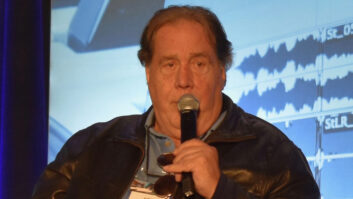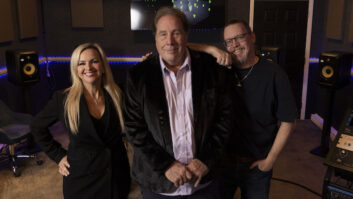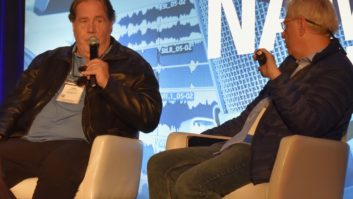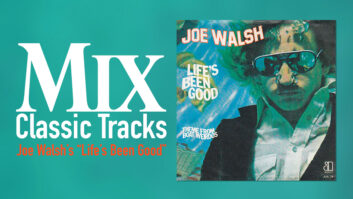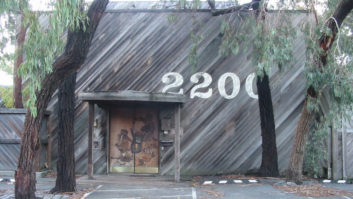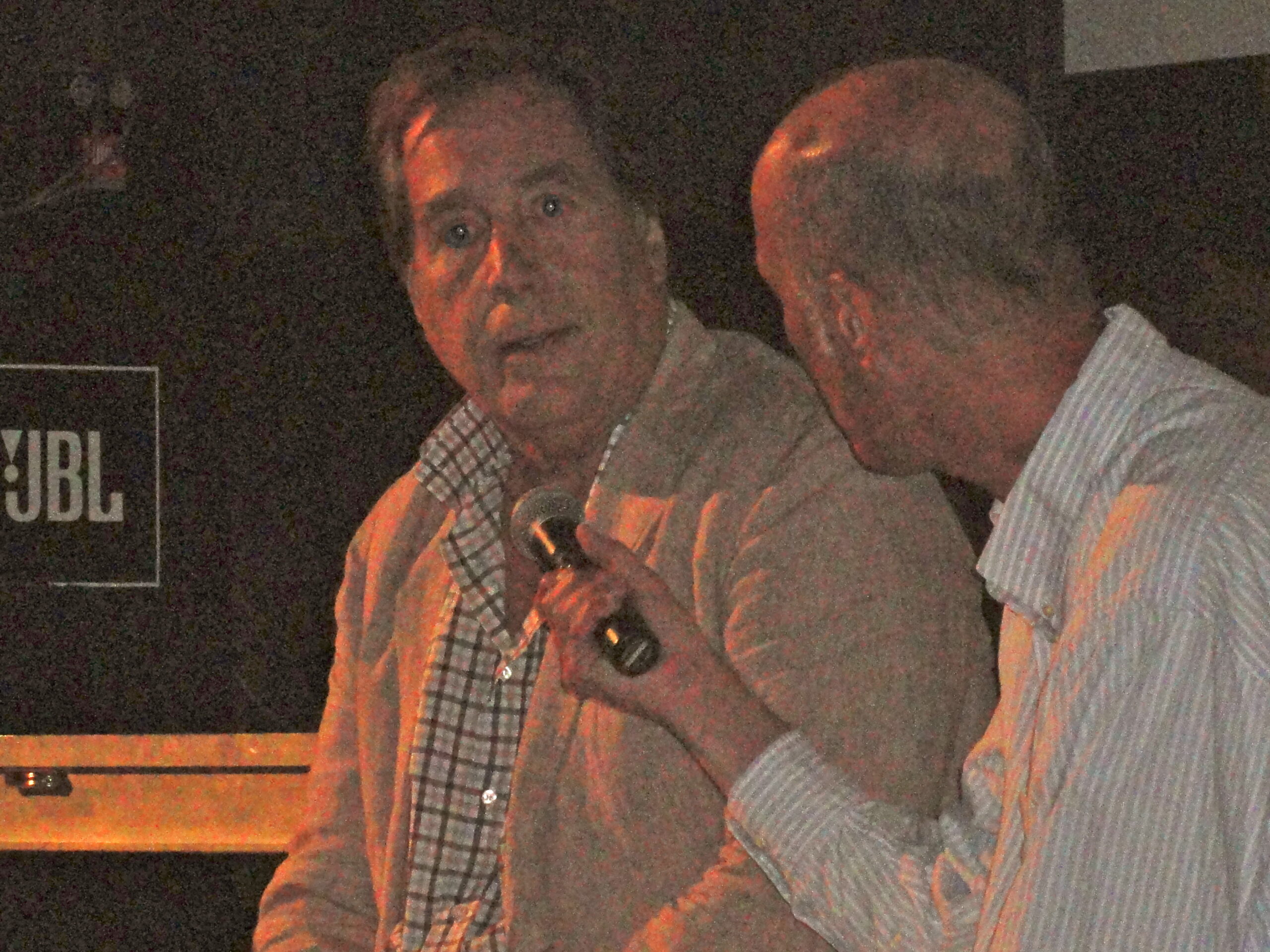
A mainstay for nearly 40 years in the Long Island suburbs outside New York City, the Cinema Arts Centre in Huntington, NY has long thrown a spotlight on all kinds of art in a myriad of different ways. As part of that tradition, the Center recently presented an evening with legendary producer/engineer Ken Caillat, as part of its ongoing Rock Legends series.
Caillat recently published a memoir, Making Rumours: The Inside Story of the Classic Fleetwood Mac Album, focusing in on his part in the epic, year-long effort to bring the titular band’s best-known record into existence. While the 1977 album by Lindsay Buckingham, Stevie Nicks, Christine McVie, John McVie and Mick Fleetwood has gone on to become one of the best-selling collections of all-time (40 million copies and counting), it was created by five musicians who were each in the process of breaking up with each other or others. Throw in hot tempers, increasing pressure to create a hit, loads of drugs and alcohol, and you get a backstory as intriguing as the album itself.
Book Review: Making Rumors: The Inside Story of the Classic Fleetwood Mac Album
Accordingly, Caillat’s book serves to bolster—and in some cases poke holes in—the legends that surround Rumours, and some of the discussion he had on stage at the Center, interviewed by veteran music scribe Steve Matteo, did the same thing.
ON WRITING MAKING RUMOURS:
The idea came about three years ago when a friend of mine told me that he was getting tired of telling all of my stories—“Why don’t you just write a book?” I said, “I don’t really feel like it, but you know, if you know a publisher comes along who’d be interested, I’ll do it.” Next thing I knew, a publisher called me and said, “We want to do your book.’ I’d said I would so I did.It took about six months to research, going through all the tapes, tape logs, and my notes and diaries and things like that. I had kept a journal and I wrote down major things, like “I took Nina to Valentines’ dinner” and so on. But the day-to-day detail was basically shown by the track sheets and the tape logs, which showed what we did, how many takes and so on. Like one day, we might’ve done 10 takes of “Silver Springs” with two false starts, so that was indicated and that’s what I wrote about. And also I knew what instruments we used on those days, so the important details were clearly already documented by my team 35 years ago.
Then it took me about three months to write it—and it was great. For those months, I was 29 again! I went back and wrote it kind of like a diary, telling what we did every day. I wanted everybody to know what it felt like to be locked in a room with a bunch of musicians making a record. The real way, not the Hollywood way.
ON BREAKING INTO RECORDING:
I was living in Northern California, being a frustrated songwriter, when I decided to move down to Southern California and get a job in a recording studio. I was already pretty good with a recorder, and I went to all the big studios—Capitol Records, RCA—figuring I’m just going to get a job in a studio, make my record, put it out and there you go—bing bang, live happily ever after. But everyone said, ‘No, we don’t have any open positions here; you ought to go to Wally Heider’s.’ I said, ‘I’ve never heard of him.’ They said, ‘Well, they do all our big band recording, all our big albums.’Wally was actually a big band fanatic. He loved Stan Kenton and all those guys, and basically decided he wanted to follow Kenton around, so he built a little mobile recording truck. That was a springboard for him to do more and more. And the thing about Wally was, since he was one of the only mobile recording companies at the time, when he recorded an act, he’d give them a deal if they came back to his studio for overdubs and mixing.
I applied for the job with Wally, and he said he loved my resume, that I was a smart guy, and said “I want to hire you, Ken.” I was all for it, but I’d seen Northern California studios that weren’t really adequate, so I said, “Wally, could I just go see some of the studios and make sure I’m gonna be happy here?” and he takes me down to the first studio and says, ‘I can’t really take you into here, because Crosby, Stills and Nash are in there.’ So I’m starting to eat my words—uh-oh—and realized I’d pushed a little far. I said, ‘Wally, let’s just shake on it,’ but he was just relishing it that this kid was giving him a hard time—‘No, no, you have to come see the rest of the studios,’ and he insisted on taking me to the other two, which had huge consoles. We hit it off well.
ON MEETING FLEETWOOD MAC:
I had worked for Wally Heider for five years and had become the ‘rock engineer,’ and Fleetwood Mac had just recorded a concert for the radio show, King Biscuit Flower Hour. True to Wally’s promise, if they went to his studio to mix it down, they’d get a special deal, so they brought it in. The traffic engineer at the studio called me up and said, “Ken, you want to come in and do Fleetwood Mac? They’re going to be mixing here.” And I said, “Fleetwood who? Nah, I’m too busy, I wanna go to the beach.” My buddy said, “Ken, you gotta do this—this is going to be a big band!” I went, “Uh, OK.” So I went and bought their record [1975’s 5 million-selling eponymous album]; they were pretty good, so I went in there. What I had to do was start mixing the radio show and one of the songs was “Rhiannon.” Stevie and the whole band were there, and she was twirling around and dancing, loving my mix.
While the group liked Caillat’s sound, he didn‘t get the gig from his concert mix; instead, it took an added twist of fate for him to wind up behind the console, engineering and ultimately co-producing Rumours, for which he eventually won a Grammy Award for Producer of the Year. For the rest of the tale, pick up Making Rumours.
